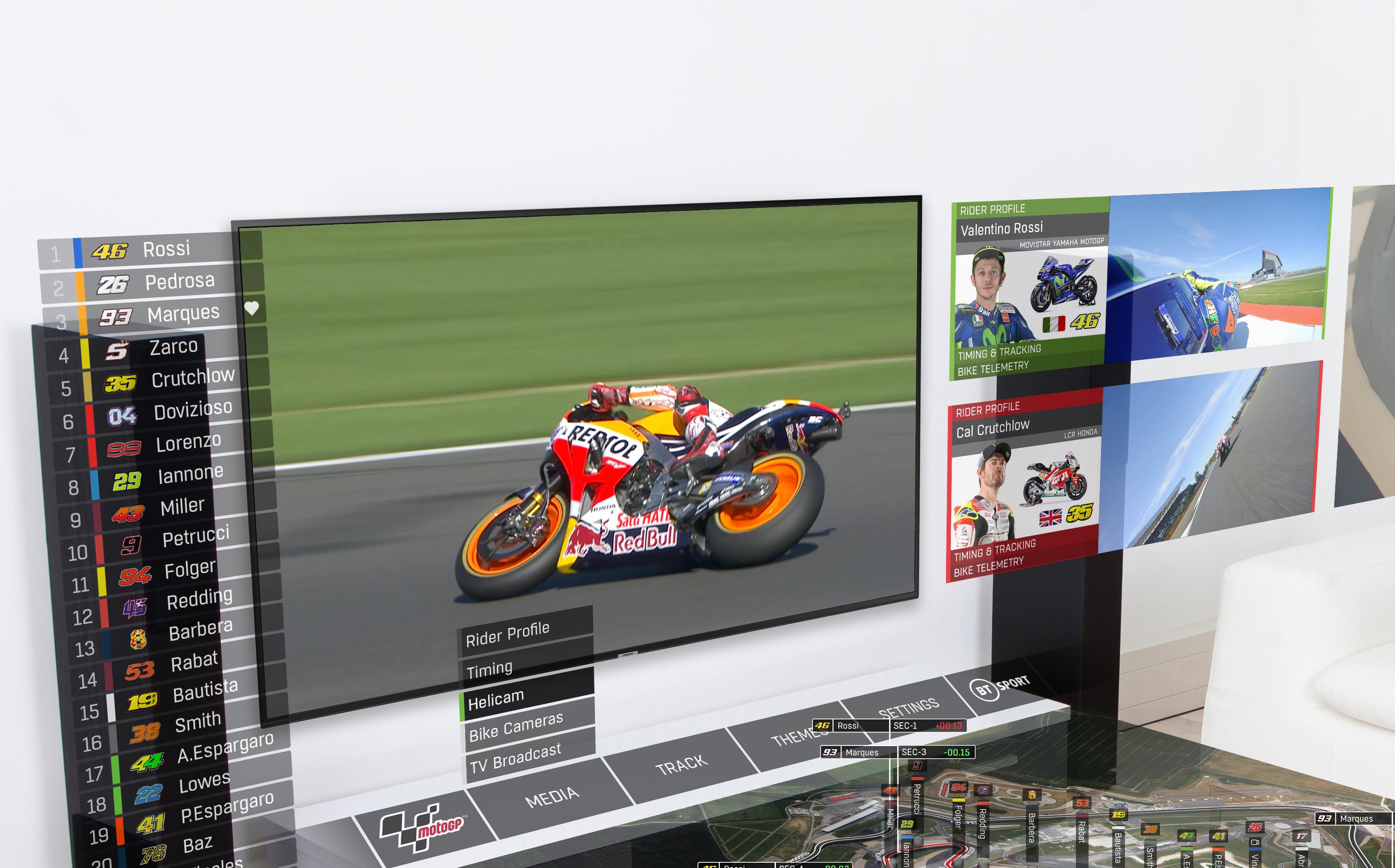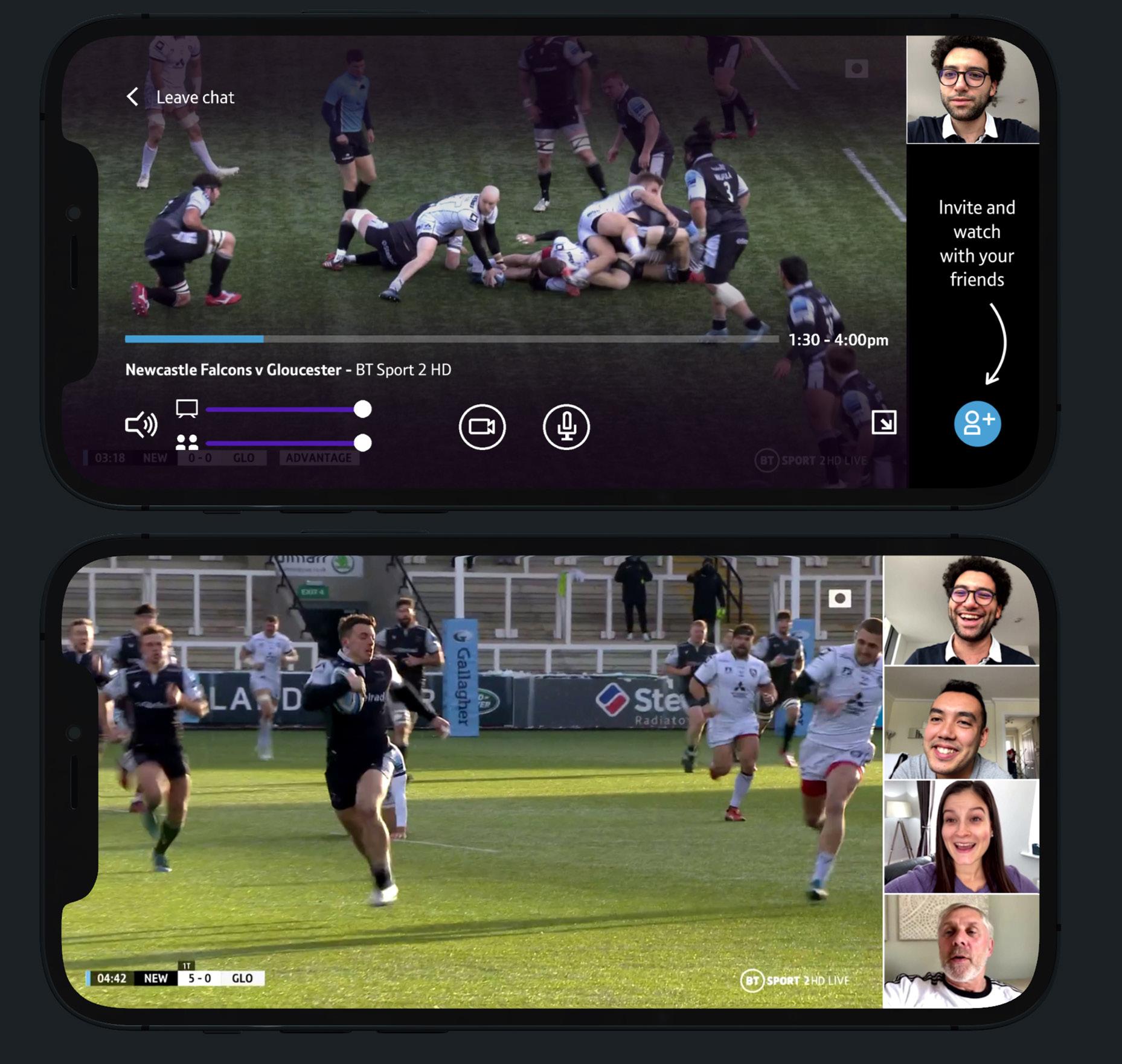
8 minute read
5G’s forecasted revolution of sports broadcasting
Matt Stagg, Director of Mobile Strategy at BT Sport, details how the future trillion-dollar network is set to transform the way fans engage with and view sport.
Technology bares the power of being able to offer innovation across almost every industry and sports is no different to that. It allows us to know whether a ball has crossed the goal line, it can track the real-life data of athletes when they are competing and has allowed us to enjoy sport from the comfort of our home.
Advertisement
It is the latter, sports broadcasting, that is seeing some of the greatest advancements that could lead to a revolutionised viewing experience for those who wish to engage with it.
The rolling out of 5G networks across the country is signalling new and unprecedented opportunities for those who believe they can exploit its potential – and its potential is mind-blowing. 5G, appears to be different that any of its 3G and 4G predecessors, following Intel’s 5G Economics of Entertainment Report, that forecasts it could bring US$1.3 trillion in new revenues for the media and entertainment industry by 2028, adding that by 2025, 57 per cent of global wireless media revenues will be generated using the technology.
“It’s the sheer scale of it,” started Matt. “With 4G, it allowed for streaming and better browsing but 5G will impact not just the way our fans can consume it, there’s lots of changes there, but it will totally revolutionise the way we make content.
“When you look at some of the lower tiered sports, we’re already remotely producing them and many we would produce over bonded 4G, but that does not provide a guaranteed service level


“It’s one large network designed for streaming and browsing but what broadcasting needs is uplink. At grounds nowadays, we’re finding there’s lots of people doing personal broadcasts, updating social media and file sizes are a lot bigger due to the quality of phone cameras, which also uses the uplink and could cause congestion.
“Therefore, 5G is going to enable us to have different ways of configuring that uplink so that its broadcast suitable. To put it simply, we will have a dedicated network or ‘slice of a network’ just for broadcasting and totally separate from anything that the consumers are using, which will make it much more reliable for us as a broadcaster.” 5G will also enable BT Sport to make use of technologies that will benefit from the far greater capacity that the dedicated network provides, most notably, untethered cameras.
“These camera’s will bring so many benefits, one of them being that you will be able to take four cameras to an event and make it look like an eightcamera production because they won’t be restricted by cables and being in a fixed location,” affirmed Matt.
“In larger stadiums, we will be able to use these untethered cameras alongside the fixed cameras that they allow for, giving us total freedom of movement and allow us to capture the action from almost every angle.
“Then, it allows us to look at really immersive experiences both in and out of the home, whether that be on the move or in-stadium. That’s when we start to look at different technologies which are going to allow us to provide a unique experience, tailored to the preferences of the fan. Some fans might want to watch one full screen, another might want to watch multiple camera angles, someone else might want stats.
“We’re very uniquely placed as a broadcaster, as the only one in the UK who has the technology for capture, a mobile network, a studio, our media broadcasting arm, access to multiple high-end devices and access to the customer and with this, we can really do some innovative things and BT Sport is now an incubator for these new technologies that could be one day used across the industry.” Last year, in the midst of a pandemic which meant that fans were kept away from sports venues, BT Sport began to roll out what was some of the first innovations as part of their new broadcasting offering, the ‘Matchday Experience’, made available through the BT Sport app. Its features included, ‘Watch ➡

Together’ – allowing fans to enjoy live sport with friends and family from another household; 360-degree advanced viewing of the action; an Augmented Reality (AR) stadium experience for fans to feel a part of the action themselves; AR team line-ups, formations and stats; and ‘Manager Mode’ – for fans to pull live graphics, stats, player names, speeds and positions to gain a tactical viewpoint.
“When the pandemic emerged, we realised this is something we can give back to fans who cannot go the ground and cannot watch it with friends and family and it’s such a social experience that we thought we could offer,” Matt explained.
“At the same time though, 5G enabled devices were being launched so it helped us to be able to do more with the Matchday Experience, like the manager mode, augmented reality and being able to look around the pitch.
“We’ve had a really good response from fans and it’s always good when a new technology comes along, and it means more than it just being about the technology. We’ve had people saying that they haven’t been able to watch sport with their Dad since the pandemic and we’ve been able to offer a solution to that problem.”
Maximising the sports and broadcast capability across BT Group from BT Sport to EE and its Technology teams, BT is also exploring how holographic technology might be used in sports broadcast “We’re exploring the traditional viewing experience of watching the sport, with a holographic image in front of you to view the action. It means that people with different preferences can watch a sport to
their own liking and that’s what makes it really exciting.
“It will of course be editorially led because we never want to lose the story of the sport, but fans will be able to pick and choose how they personally want to make the most of that and get their own experience of the sport.
“Our holographic technology is set to be demoed through a range of sports, such as AR immersive sports fan experiences with features including multi-camera video streams, immersive high-resolution 360-degree video and real time visual statistics. and riders can be tracked by viewers and visualised on a 3D track.
“The boxing will be a volumetric video AR experience, with real-time video holograms that can be watched on the viewers coffee table!
“We’re really excited to show it off and let people see that this isn’t something of science fiction anymore.
As with anything that is going to break the norm, there are those who are questioning whether it will be welcomed, with scarring memories lingering for many who witnessed the failed take-off of 3D sports broadcasting earlier in the last decade.
“The biggest reason that 3D technology didn’t work in sports broadcasting is because sport is a social experience and
There are also traditionalists who won’t want to see anything taken away from the experience of going to watch the sport live and Matt respects this viewpoint and instead is looking to offer something for them too. “The number one priority for a sports fan is to be at the live event. And ultimately, what we’re saying is, if you cannot be at the event then there is different ways of doing it. “We are looking to offer our broadcasting services to those at live sports too by “Enhancing experiences in a football match is not a new thing augmenting them. Many fans could be though. My Dad used to take a radio with him to listen to the against that but again it’s an individual’s commentary and people now are looking online at stats and choice. “Enhancing other elements that you don’t get from watching a live game. ” experiences in a football match is not a new thing though. having to sit there with glasses on, with My Dad used to take a radio with him no other option than to focus on the TV, to listen to the commentary and people took away a lot of the positive experience now are looking online at stats and you get from watching sport – and the other elements that you don’t get from image didn’t look that much better watching a live game. anyway,” Matt explained. “If you want to get some additional “However, the biggest difference is that information that adds value to what we are always exploring ways of scaling you’re doing, then that’s something we’ll this as a technology. Technology providers offer. It’s all about adding options to aren’t going to provide the relevant devices increase engagement and take the fan just so sports broadcasters can show a closer to the heart of the sport but at holographic boxing match but if it can be their pace and through their choice.” used to help out with, for example, home- Matt Stagg alongside his team at BT schooling and having a teacher appear in Sport are certainly optimistic about the your house, or to use at a GP surgery or future of sports broadcasting and what having medical professionals able to look 5G can offer to them in being able to over someone from an ambulance before change the way they deliver sport to they arrive at the hospital, then it gives us their audiences but how fans are able to the greatest chance of being able to scale interact and get closer even closer to the it for our own purposes. action. ◆


